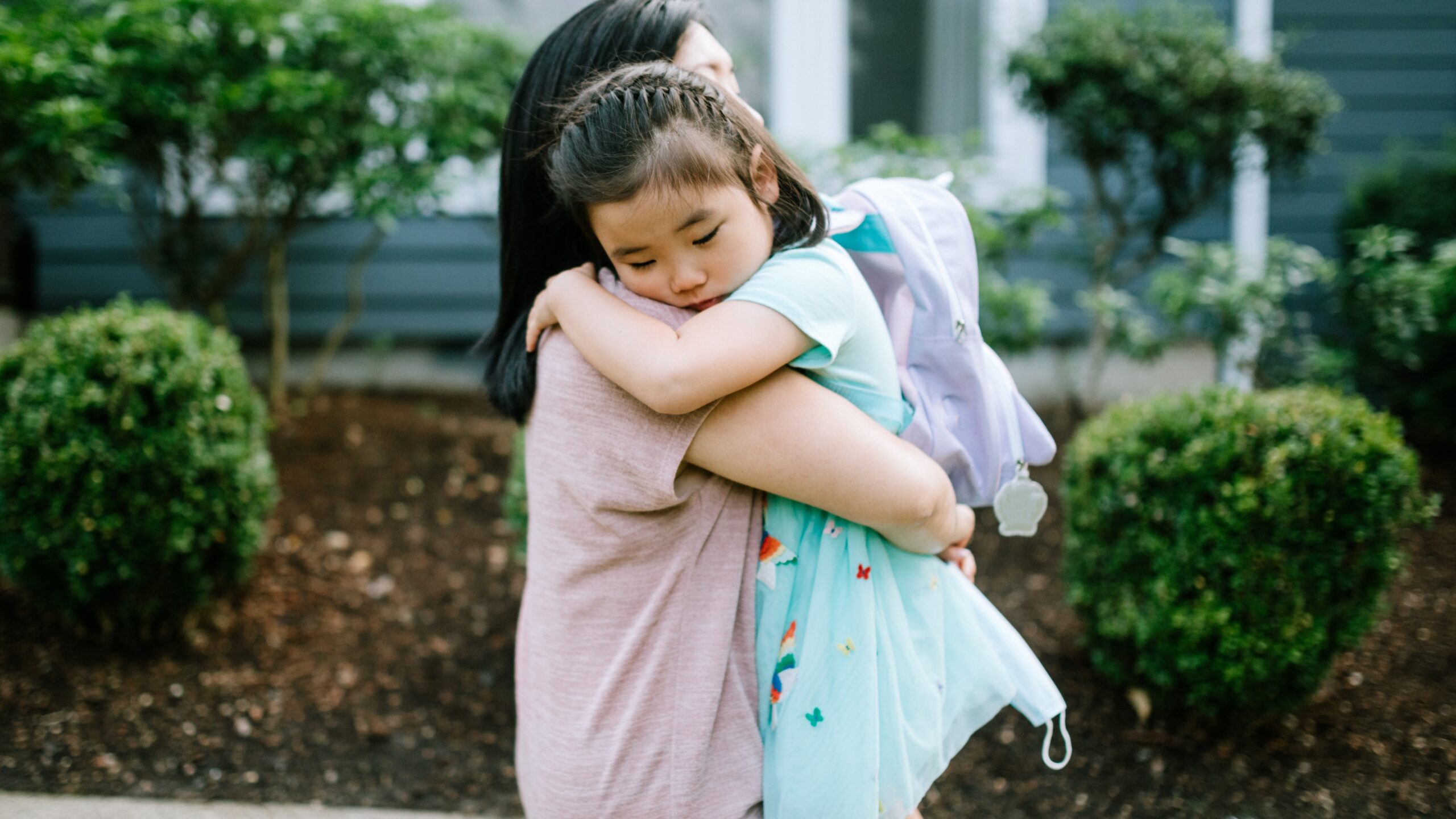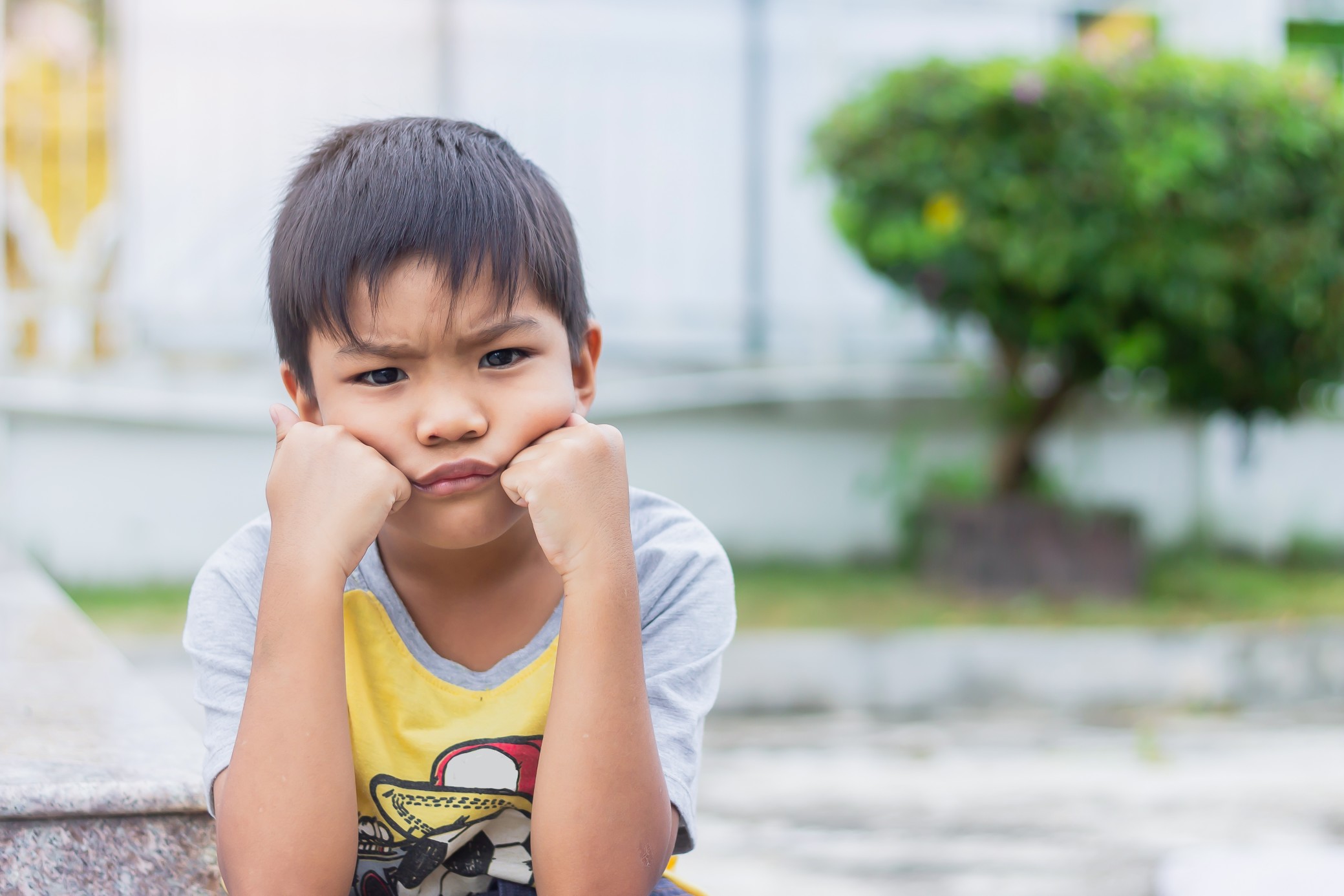
Anxiety isn’t just an adult issue. While as parents we may be focused on our own self-care, it’s important to recognize that our kids may be picking up on our feelings or going through their own issues. One in five children has a diagnosable mental disorder, according to the American Psychological Association. The Anxiety and Depression Association of America states that girls are twice as likely as boys to have an anxiety disorder in childhood, and this gender difference only increases with age. But they might not always show signs as expected. That’s why it’s important to keep track of your child’s mental health.
“Children experiencing high levels of anxiety are more likely to be physically sick, experience additional social problems, suffer from weakened brain development, and be less financially independent in later life,” according to Dr. Michele Kambolis, a registered child and family therapist and parent educator and a registered clinical counselor.
Her acclaimed book, Generation Stressed: Play-Based Tools to Help Your Child Overcome Anxiety, translates cognitive behavioral therapy (CBT) into fun playtime exercises that can be practiced by parents with children. Kambolis will also be hosting an upcoming virtual “Stress Buster Challenge,” which gives children practical tools to overcome stress and anxiety so they can be their happiest selves. The daily challenges empower children in the face of stress and help them change their inner architecture for a lifetime of well-being.
LittleThings spoke with Kambolis to find out what parents need to know and to also learn ways that parents can help their kids at home.
If your child has begun to act out more than usual, Kambolis recommends checking in to see if there is a new worry on their mind.
“Acting out is one of the faces of anxiety,” Kambolis tells us. “When a child is acting out, their emotions are dis-regulated and their behaviors show it. As a way of feeling more secure, a child who feels anxious may become more rigid and defiant to regain a sense of control. The active fight-or-flight system leads to greater reactivity, irritability, and a flood of stress hormones, so instead of punishing a child who is acting out, it’s important to soothe them first. While boundaries and clear expectations are one of the mainstays of parenting, an acting-out child is a distressed child who needs our help to feel calm again.”

Some children may have more anxiety at school than at home. Tina Theodoropoulos, principal of Riverview Elementary School (a National Blue Ribbon School in Denville, New Jersey), tells LittleThings, “If parents notice their child is experiencing difficulties, they should strongly consider partnering up with their child’s teacher and/or school counselor to find ways to help their child at both home and school. It is helpful to remind children that adults experience sadness, anxiety, and stress as well, and talk about strategies they do to feel better so their child doesn’t feel alone. Another strategy is when they are feeling sad that they know that [it's] OK to feel sad, but they don’t have to stay in that mood. One way to lift our spirits is to make a list of all the things we are grateful for; it’s very hard to feel sad and grateful at the same time. Those are competing emotions.”

Children may also be on edge because of a health issue or food allergy. In these cases, Kambolis notes, “Worrying is the cognitive expression of anxiety and a big part of helping children overcome anxiety. When a child is worrying, you can remind them that the only thing that is true and real is right here, right now. The past no longer exists, and the future is unknowable, so let’s be in the present. The best way to do that is to acknowledge the thought and simply label it for what it is, ‘thinking,’ then focus on an anchor. An anchor might be the feeling of the breath at the nose or belly, the touch points between their fingers, or the sounds in the room. The point here is that over-focusing on the thinking mind gets us in trouble, it’s wildly unruly, and we can train our mind for greater peace and friendliness.”
The key to helping a child overcome anxiety is staying within their window of tolerance, according to Kambolis. She says, “The window of tolerance is the state where the brain is functioning well and can process, think rationally, reflect, and manage expectations without feeling flooded. It’s hard for a child to express just where that threshold might be, so look for signs of shutting down, getting fidgety, distracted, or irritable, and practice tools for self-soothing before you take a next step.”
Below, Kambolis shares four stress-reducing exercises.
1. The Balloon Buster
Good for all ages
Materials needed: balloons and a permanent marker
Step 1: Help children identify a negative belief that’s contributing to their anxiety or discomfort. The negative belief usually starts with “I” (e.g., “I’m not good enough” or “I can’t do it”).
Step 2: Look through the list of thinking traps and help kids to determine which culprit might apply. This step helps them to discredit the negative belief and shows that it’s simply inaccurate.
Step 3: Encourage children to let go of the negative belief by breathing it out of the body and into the balloon. With each breath, they’re making that negative belief smaller and leaving more room for empowering thoughts. (Keep in mind that some children have a hard time blowing up balloons, in which case you can set them up for success by doing it for them. Simply ask them to pretend they’re blowing it up themselves.)
Step 4: Leave the balloon untied; just have children pinch the opening closed with their fingers. For extra effect, write the negative belief on the balloon with a permanent marker. Tell them that they can get rid of the negative thought by releasing the balloon and letting it fly around the room. You’ll probably notice them burst into laughter as they see the balloon (and their negative thoughts) fly out of control.
Step 5: Next, help kids to identify an opposite, more helpful thought to replace the negative one. “I’m not good enough” becomes “I’m good enough just as I am,” and “I can’t do it” turns into “I can take it one step at a time.”
Step 6: Finally, have children close their eyes and inhale deeply, imagining that they are breathing that positive thought into their body, to take up the free space where the negative thought once lived.
2. The Sponge Squeezer
Good for all ages
Materials needed: a large sponge, a bucket of water, and natural food coloring and a glass of drinking water (optional)
Step 1: Have kids imagine their body is a sponge, and their body sponge can absorb thoughts and feelings that are helpful as well as ones that aren’t.
Step 2: Help them recall an unhelpful thought and feeling they often battle. For example, “This is a horrible day. I feel so sad.” Or, “My sister always gets me in trouble. I feel really mad.”
Step 3: Take a big sponge and place it in a water bucket. Encourage kids to squeeze all of the water out of their sponge by using both hands. Let them know that as they’re squeezing out all that water from the sponge, they’re also squeezing all of that unhelpful thought and negative feeling out of their body and mind.
Step 4: Invite them to fill the sponge with water and squeeze it out again (and again, if needed) until they’ve got all the water out of the sponge and all the negative thought and the sad, mad, scared, or anxious feelings that went with it out of their body sponge. It’s OK if it’s not completely gone.
Step 5: Help children to imagine a positive thought and a good feeling they’d like to bring into their mind and body instead.
Step 6: Have children imagine the thought and feeling as a color, then use natural food coloring to magically turn a glass of water into drinkable thoughts and feelings of that color.
Step 7: Invite kids to drink in their helpful thought and positive feelings to fully bring them in to their mind and body. Join in and you can all drink up the joy!
3. The Worry Wall
Good for all ages
Materials needed: sticky notes and markers
Step 1: Introduce kids to this activity by letting them know that you’ve been thinking a lot about their worries and you have a special way to help get those worries out of their head. Some people imagine there’s a “worry bug” that likes to munch on worries; the more worries that bug eats, the hungrier it seems to get. One way to block the bug from feeding on worries is by writing them down and sticking them on a “worry wall.” They may want to include a solution if the worry is one that can be solved. Once those thoughts are on the worry wall, they’re no longer in our mind — the worry bug can eat the worries on the wall instead! Once the worries are out, the worry bug has nothing to eat and goes somewhere else.
Step 2: Encourage children to write or draw as many worry thoughts as they can and stick all their worries on their very own worry wall. Remind them that once the worries have been written down, they don’t have to think about them anymore.
Step 3: Now here’s the most important part: Each worry needs a positive thought to replace it. Have kids build another wall — their optimism wall. For each worry, create two thoughts to replace it; make sure those new thoughts are optimistic ones. By the time the wall of optimism is finished, it will be twice as big as the worry wall!
Step 4: Once children have built their optimism wall, invite them to go ahead and tear down their worry wall, munching up the papers in their hands just like the hungry worry bug.
4. Mindfulness Glitter Jar
Best for ages 5 to 12
Materials needed: empty water bottle, one tube glitter glue, and one tube dry glitter
Step 1: Have kids sit with you in a comfortable and quiet area. Give them the glitter bottle and ask them to shake, shake, shake it until the glitter is swirling around like busy thoughts in their brain. It’s just like when the amygdala is on high alert and sending out thoughts and sensations that are spreading everywhere.
Step 2: Take a few deep breaths in and out together, and encourage kids to simply join you in noticing the glitter as it settles to the bottom.
Step 3: Encourage them to imagine the glitter as thoughts — without worrying about what the thoughts are or what they mean. Kids can simply notice the thought, name it as “thought” as it passes by and watch as it floats around. As the glitter starts to settle, ask them to imagine that the thoughts and ideas in their mind are settling too, gently clearing away the cloud in their mind.
Keeping track of your child’s mental health can also be beneficial for parents by bringing more joy to the parent-child relationship.




